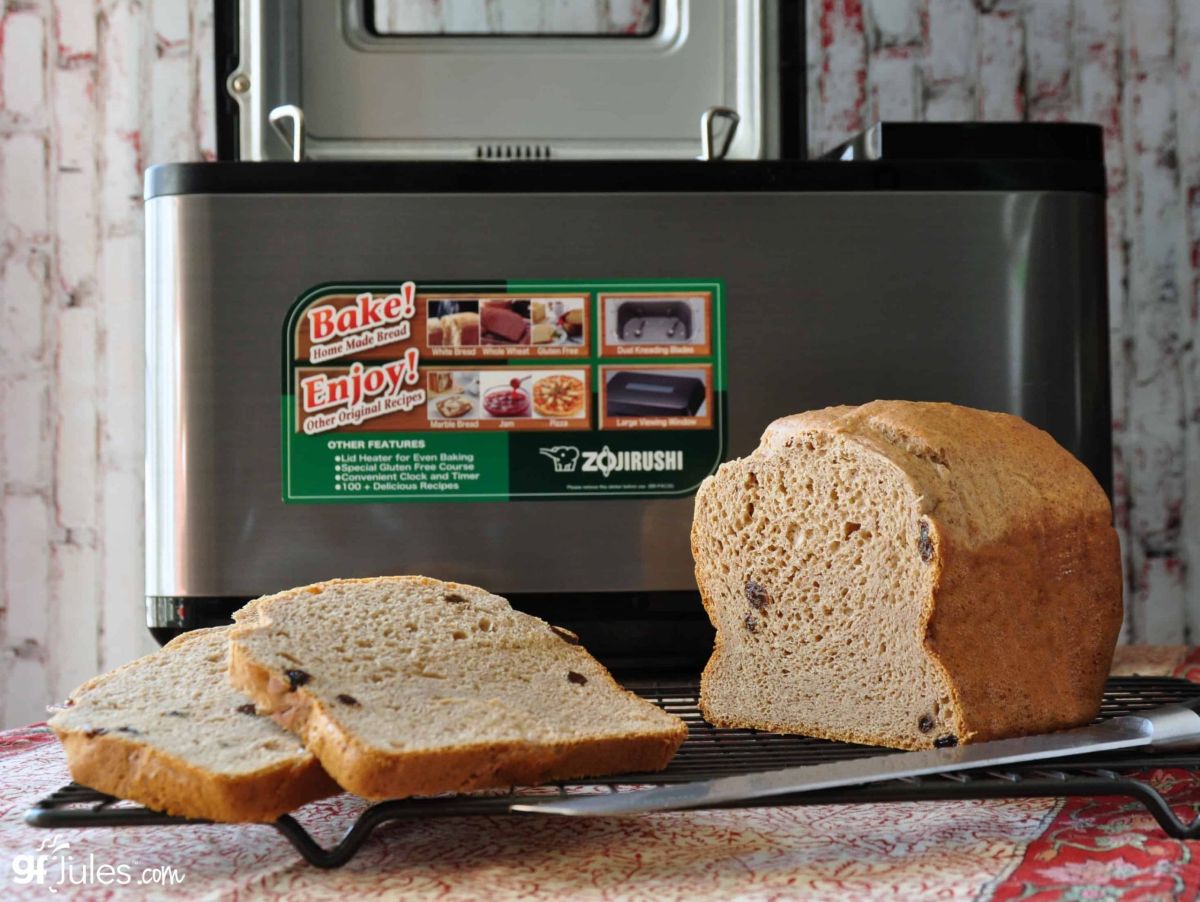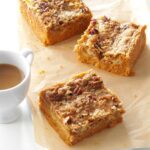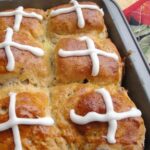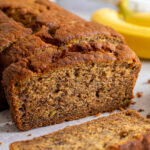Embark on a culinary adventure! This guide unveils the secrets to crafting delectable gluten-free bread, even without the convenience of a bread machine. Discover the nuances of gluten-free flours, master essential techniques, and troubleshoot common pitfalls. Prepare to transform your kitchen into a haven of fragrant, perfectly textured, and utterly delicious gluten-free loaves.
From understanding the unique challenges of gluten-free baking – like achieving the right rise and texture without gluten’s elasticity – to mastering precise measurements and mixing techniques, this comprehensive guide will empower you to create bread that rivals (and perhaps surpasses!) traditional loaves. We’ll explore a variety of flours, delve into the science behind gluten-free binders, and equip you with the knowledge to troubleshoot any issues along the way. Get ready to experience the joy of baking truly satisfying gluten-free bread.
Understanding Gluten-Free Baking
Embarking on the journey of gluten-free bread baking presents a unique set of challenges compared to traditional methods. The absence of gluten, the protein responsible for the elasticity and structure in wheat bread, necessitates a fundamental shift in approach, requiring careful selection of ingredients and techniques. The resulting textures and outcomes can be dramatically different, demanding a deeper understanding of the properties of various gluten-free flours and binding agents.
Gluten-free baking often results in breads that are crumbly, dense, or lack the characteristic chewiness of their gluten-containing counterparts. This is primarily because gluten-free flours lack the ability to form a strong, cohesive network during mixing and kneading. Successfully navigating these challenges requires a nuanced understanding of flour properties and the strategic use of binding agents.
Gluten-Free Flour Properties and Their Impact on Bread Texture
The success of gluten-free bread hinges on the careful selection and combination of different gluten-free flours. Each flour possesses unique characteristics that contribute to the final product’s texture and flavor. Almond flour, for instance, lends a delicate sweetness and moistness but can also result in a denser bread due to its high fat content. Rice flour, particularly finely milled varieties, contributes to a lighter texture but can also lead to a crumbly result if not combined with other flours. Tapioca starch, on the other hand, provides a slightly chewy texture and helps bind other ingredients, though it lacks significant nutritional value on its own. A blend of these flours, often including a starchy component like tapioca or potato starch, is usually necessary to achieve a more balanced and palatable bread. The precise ratios depend heavily on the desired texture and the specific flours used. For example, a blend of brown rice flour, tapioca starch, and almond flour might yield a slightly sweet and moist loaf, while a blend focusing on white rice flour and potato starch would likely result in a lighter, potentially drier bread.
Gluten-Free Binders and Their Effectiveness in Creating Structure
The lack of gluten necessitates the use of alternative binding agents to provide structure and cohesiveness to gluten-free bread. These binders help to mimic some of the functions of gluten, albeit imperfectly. Xanthan gum, a common choice, is a polysaccharide derived from bacterial fermentation. It imparts elasticity and helps to hold the dough together, resulting in a more cohesive crumb. Guar gum, another popular option, shares similar properties to xanthan gum but can sometimes yield a slightly stickier texture. Psyllium husk, derived from the Plantago ovata plant, adds moisture retention and binding properties, contributing to a more tender crumb. The effectiveness of these binders varies depending on the specific flour blend and the desired outcome. For instance, xanthan gum might be preferred for its ability to create a more elastic dough, while psyllium husk might be better suited for recipes that prioritize moisture retention. Often, a combination of binders is employed to achieve optimal results. A recipe might call for both xanthan gum and psyllium husk to balance elasticity and moisture, leading to a more satisfying bread texture.
Troubleshooting Common Gluten-Free Baking Problems
Gluten-free bread baking presents unique challenges compared to traditional baking. The absence of gluten, the protein that provides structure and elasticity in wheat bread, necessitates careful attention to ingredients and techniques to achieve a desirable result. Understanding the common pitfalls and their solutions is crucial for consistent success. This section details frequent issues and offers practical solutions to guide you towards perfectly baked gluten-free loaves.
Crumbly Texture
A crumbly texture is a common problem in gluten-free bread. This often results from insufficient binding agents within the recipe. Gluten acts as a natural binder, holding the bread together. In its absence, other ingredients must perform this role effectively.
- Insufficient Binding Agents: The lack of enough xanthan gum, guar gum, or psyllium husk can lead to a crumbly loaf. These hydrocolloids mimic gluten’s binding properties. Ensure your recipe contains the recommended amount, and consider slightly increasing it if necessary, while carefully monitoring the consistency of the dough.
- Overmixing: Overmixing can develop the gluten substitutes excessively, resulting in a tough and crumbly texture instead of a soft one. Mix only until the ingredients are just combined.
- Incorrect Ratio of Wet to Dry Ingredients: An imbalance in liquid to dry ingredients can affect the final texture. Too much liquid can result in a gummy, crumbly bread, whereas too little liquid will result in a dry, crumbly product. Follow the recipe precisely, adjusting only slightly based on the specific flours used.
Dense Loaf
A dense, heavy gluten-free loaf often stems from insufficient leavening or improper baking techniques. The airy texture of traditional bread relies on gluten’s ability to trap gases produced during fermentation. Without gluten, alternative methods must be employed to achieve a light and airy crumb.
- Insufficient Leavening Agents: Insufficient baking powder or yeast can result in a dense loaf. Ensure your leavening agents are fresh and used in the correct amounts. Consider using a combination of baking powder and yeast for optimal results.
- Overbaking: Overbaking can dry out the bread, making it denser. Use a thermometer to ensure the internal temperature reaches the appropriate level (around 200-210°F/93-99°C) for your recipe and avoid overbaking.
- Incorrect Flour Blend: Some gluten-free flour blends are naturally denser than others. Experiment with different blends to find one that yields a lighter loaf. Adding a small amount of rice flour can help lighten the texture.
Gummy or Sticky Texture
A gummy or sticky texture usually points to an excess of moisture in the bread. This can stem from using too much liquid or selecting ingredients with high moisture content.
- Excessive Liquid: Adding too much liquid will result in a gummy loaf. Start with the minimum amount specified in the recipe and add more only if necessary to achieve the correct consistency. The dough should be moist but not overly wet.
- High-Moisture Ingredients: Certain ingredients, such as mashed banana or applesauce, add significant moisture. If using such ingredients, reduce the amount of liquid in the recipe accordingly.
- Insufficient Starch: Starches absorb moisture, preventing a gummy texture. If your recipe is lacking in starchy ingredients, like tapioca starch or potato starch, consider adding a small amount to balance the moisture.
Exploring Variations and Flavor Combinations

The beauty of gluten-free baking lies in its adaptability. Once you master a basic gluten-free bread recipe, the possibilities for flavor and texture variations are endless. By carefully selecting add-ins and adjusting techniques, you can transform a simple loaf into a culinary masterpiece. This section explores three distinct variations, highlighting the visual and textural changes that result from each.
Rosemary and Olive Oil Gluten-Free Bread
This variation offers a savory delight, perfect for dipping in olive oil or serving alongside soups and stews. The addition of rosemary imparts a fragrant, slightly piney aroma, while the olive oil contributes a rich, fruity flavor and a slightly moist crumb. Visually, the bread presents a rustic appearance, with flecks of dark green rosemary throughout the golden-brown crust. The texture is slightly coarse, reflecting the inclusion of herbs, yet pleasantly chewy with a soft interior. The aroma is intensely herbaceous and inviting, promising a flavorful experience.
Cinnamon Raisin Swirl Gluten-Free Bread
A delightful departure from savory, this sweet bread is ideal for breakfast or dessert. The warm notes of cinnamon blend harmoniously with the sweetness of plump raisins, creating a comforting and indulgent treat. The visual appeal is undeniable; a golden-brown crust encases a swirling interior of cinnamon-speckled dough punctuated by dark, glistening raisins. The texture is softer than the herb bread, with a tender crumb that melts in your mouth. The aroma is sweet and spicy, reminiscent of comforting baked goods.
Garlic and Cheddar Gluten-Free Bread
This variation delivers a powerful savory punch, perfect for pairing with hearty cheeses and strong-flavored soups. Sharp cheddar cheese and pungent garlic are incorporated into the dough, resulting in a bread that’s both flavorful and satisfying. The loaf boasts a deep golden-brown crust, speckled with pockets of melted cheddar. The interior is studded with creamy cheese and flecks of garlic, creating a visually appealing contrast. The texture is firm yet yielding, with a satisfying chew and a burst of sharp, savory flavor in each bite. The aroma is a robust blend of garlic and melted cheese.
Add-in Impact on Gluten-Free Bread
The following table illustrates how different add-ins affect the final product’s taste and texture:
| Add-in | Taste Impact | Texture Impact | Visual Impact |
|---|---|---|---|
| Rosemary | Herbaceous, slightly piney | Slightly coarse, chewy | Flecks of dark green throughout golden-brown crust |
| Raisins | Sweet, fruity | Slightly softer, moist | Dark, glistening raisins within the dough |
| Cinnamon | Warm, spicy, sweet | Slightly softer, tender | Light brown speckles throughout the crumb |
| Cheddar Cheese | Sharp, savory, salty | Firm, yielding, slightly crumbly | Visible pockets of melted cheese |
| Garlic | Pungent, savory | Slightly denser | Flecks of garlic throughout the crumb |
| Sun-dried Tomatoes | Tangy, sweet, savory | Slightly moist, chewy | Bright red specks within the dough |
| Walnuts | Nutty, slightly oily | Slightly denser, chewier | Visible walnut pieces throughout |
Baking gluten-free bread might seem daunting, but with the right knowledge and techniques, it becomes an achievable and rewarding experience. This guide has equipped you with the foundational understanding, essential recipes, and troubleshooting skills to confidently create a variety of delicious gluten-free loaves. So, gather your ingredients, embrace the process, and savor the incredible taste of homemade gluten-free bread – a testament to your culinary prowess and a delightful treat for your palate.
FAQ Summary
Can I use any gluten-free flour blend for this recipe?
While the guide provides a base recipe, different flour blends yield varying results. Experiment to find your preferred blend. Some blends may require adjustments to liquid ratios.
How long does gluten-free bread last?
Properly stored gluten-free bread typically lasts 3-4 days at room temperature. Freezing is recommended for longer storage.
What if my gluten-free bread is too crumbly?
Crumbly bread often indicates insufficient liquid or an improper flour blend. Try adding a tablespoon of liquid at a time until the desired consistency is achieved. Consider using a blend with higher xanthan gum content.
Why is my gluten-free bread dense?
Overmixing or insufficient rising time can lead to dense bread. Follow mixing instructions carefully and ensure adequate proofing time.


